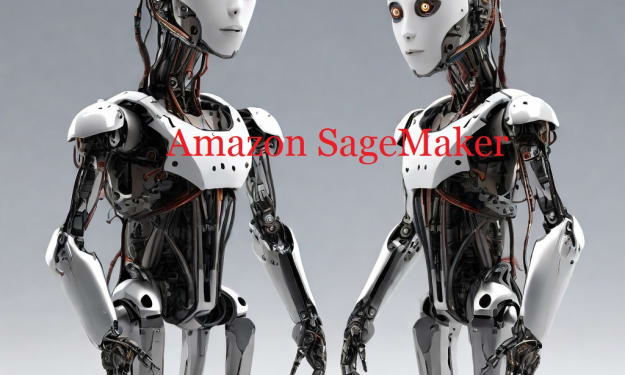The Critical Role of Immediate First Aid in Cardiac Arrest
Saving Lives on the Field
Introduction
Cardiac arrest is a sudden and life-threatening medical emergency that can occur at any time, including on sports fields. When a player experiences cardiac arrest, time becomes the most valuable resource, as every second counts in determining their survival. Immediate and appropriate first aid, particularly cardiopulmonary resuscitation (CPR) and the use of automated external defibrillators (AEDs), can significantly increase the chances of restoring blood circulation and oxygen supply to the brain and other vital organs. This article will explore the critical importance of immediate first aid in cases of cardiac arrest on the field, using specific examples to emphasize its life-saving potential.
The Anatomy of Cardiac Arrest
Before delving into the significance of first aid, it is essential to understand what cardiac arrest is and how it differs from a heart attack. Cardiac arrest occurs when the heart's electrical system malfunctions, leading to an irregular heartbeat (arrhythmia). As a result, the heart stops pumping blood effectively, leading to a cessation of blood flow throughout the body.
In contrast, a heart attack occurs when there is a blockage in the blood vessels supplying the heart muscle, causing damage to the heart tissue. While a heart attack can potentially lead to cardiac arrest, not all heart attacks result in cardiac arrest.
The Importance of Time in Cardiac Arrest
In cases of cardiac arrest, the first few minutes are critical. Without prompt intervention, the brain and other vital organs begin to suffer from oxygen deprivation, leading to irreversible damage and increasing the risk of death. For every minute that passes without CPR and defibrillation, the chances of survival decrease by about 7-10%.
A study by the American Heart Association (AHA) found that when CPR and defibrillation are initiated within the first 3-5 minutes after cardiac arrest, survival rates can exceed 50%. However, for each minute of delay in starting CPR and defibrillation, the likelihood of survival drops significantly.
The Role of Bystanders and Sports Personnel
Bystanders and sports personnel, including coaches, teammates, and spectators, play a crucial role in providing immediate first aid to a player experiencing cardiac arrest on the field. Many sports organizations and associations now recognize the significance of basic life support (BLS) training, which includes CPR and AED use.
One notable example is the case of Fabrice Muamba, a professional football player who suffered a cardiac arrest during a match in 2012. Muamba's collapse on the field prompted immediate intervention from both medical personnel and fellow players. The rapid administration of CPR and defibrillation using an AED contributed to his survival. Muamba's case highlights the vital role that bystanders can play in saving lives on the field when equipped with the knowledge and skills of first aid.
Accessibility of Automated External Defibrillators (AEDs)
The availability and accessibility of AEDs on sports fields are critical in maximizing the chances of survival for players experiencing cardiac arrest. AEDs are portable devices that can analyze the heart's rhythm and deliver an electric shock, if necessary, to restore a normal heart rhythm.
In some countries, regulations now require sports facilities to have AEDs readily available, and many sports organizations have implemented AED training as part of their standard protocols. One such example is the case of a high school basketball player in the United States who experienced cardiac arrest during a game. Thanks to the immediate use of an AED by a trained coach, the player's life was saved before the arrival of EMS personnel.
Building Awareness and Preparedness
Raising awareness about cardiac arrest and the importance of immediate first aid is essential for saving lives on the field. Sports associations and organizations can play a significant role in promoting first aid training among athletes, coaches, and spectators.
For instance, the International Olympic Committee (IOC) and various sports federations have incorporated first aid training into their coaching and sports management programs. By educating individuals involved in sports about the signs and symptoms of cardiac arrest and the appropriate steps to take in such emergencies, we can create a safer environment and improve survival rates.
Conclusion
Cardiac arrest is a life-threatening emergency that can strike anyone, including athletes on sports fields. The critical importance of immediate first aid, particularly CPR and defibrillation, cannot be overstated. Time is of the essence, and every second counts in determining a player's chances of survival and minimizing the risk of long-term complications.
The examples of Fabrice Muamba and the high school basketball player demonstrate the life-saving potential of immediate first aid and the vital role of bystanders and sports personnel in providing timely intervention. Furthermore, the availability and accessibility of AEDs on sports fields are crucial components in maximizing survival rates.
By building awareness, providing training, and implementing protocols that prioritize immediate first aid, we can create a safer sports environment and save lives on the field. The collaboration of sports organizations, medical professionals, and the community at large is essential in ensuring that players experiencing cardiac arrest receive the best possible chance of survival. Remember, in cases of cardiac arrest, every second truly does count.





Comments
There are no comments for this story
Be the first to respond and start the conversation.